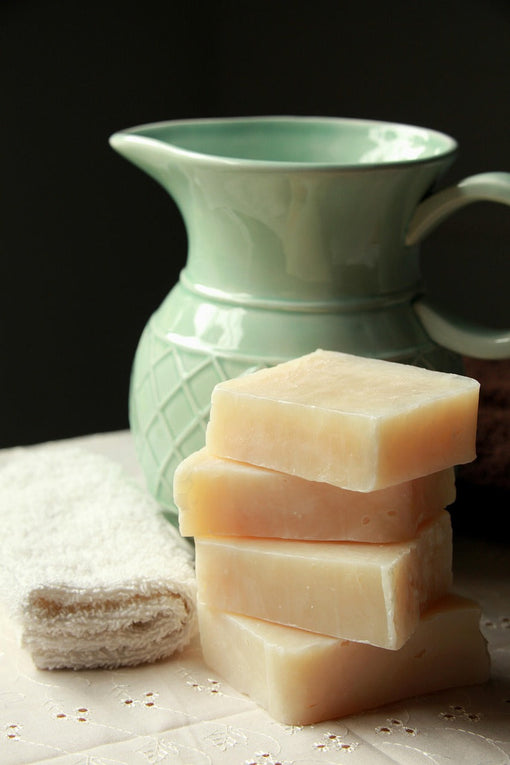
- Article published at:
- Article author: Valerie M. Malla
- Article tag: AumOui Artisan Soap
- Article comments count: 0
Why AumOui Artisan Soap is Nurturing: A Complete Sensory Return to Nature
There is something deeply ancient and knowing in the act of washing — when we return to water, to the earth, and to our bodies with care. At AumOui, every bar of artisan soap is more than cleansing — it is a ritual of nurture, an invitation to reconnect with the wisdom of nature and the beauty of self-empathy.
Our sense of touch, smell, and sight are powerful allies in supporting wellness. The soft feel of rich shea, cocoa, mango, and marula butters melting into the skin. The scent of wild lavender, dandelion, and rosehip rising with steam. The earthy hue of clays mingling with golden calendula or deep green nettle. These experiences are not luxuries — they are reminders. That we are alive. That we deserve softness.
Each ingredient is chosen with purpose and reverence. Nourishing milks soothe and moisturize. Mineral-rich clays detox and ground. Essential oils speak directly to our emotional centers, evoking peace, clarity, and calm. Botanicals like horsetail, skullcap, cat’s claw, and nettle bring their centuries-old plant intelligence — are anti-inflammatory, toning, harmonising, and deeply restorative.
To use AumOui Soap daily is to practice self-respect. It is to affirm that you are worth the time, the space, the softness — even in small moments. Through this commitment to sensory self-care, we open up our heart-space to hear our own needs again and remember that nurturing is not an indulgence, but a return to wholeness.
🌿 Benefits to Mind, Body & Soul
✨ For the Mind
Certain essential oils used in our blends — like lavender and ylang ylang — support a calm, steady nervous system.
Nature-based rituals help reduce mental fatigue and rewire the brain for presence.
Visual and aromatic cues in soap use can foster as daily meditative anchors.
🌼 For the Body
Skin is nourished with naturally occurring vitamins A, E, and C from botanicals and butters.
Clays, milks, and herbs gently exfoliate, brighten, and tone the skin.
Luxuriously rich butters reduce inflammation and dryness, whilst protecting and balancing the skin's barrier.
🌸 For the Soul
Plant allies like rosehip and calendula also encourage emotional healing and receptivity, in addition to their many super-powers.
Regular self-care fosters self-trust and increases compassion toward oneself, and towards others, resulting in a more harmonious life-experience.
The act of mindful bathing becomes a sacred pause — a moment to remember your values to yourself and the world you live in.
🌺 A Daily Ritual of Care
When we care for our bodies with nature’s gifts, we begin to listen inwardly with more kindness. Every bar of AumOui Soap is handmade with intention — and designed to awaken your senses to what’s already within: balance, beauty, and belonging.
🌼 Let Nature Nurture You
We invite you to explore our collection and find a blend that speaks to you. Whether you're drawn to calming florals, mineral-rich earth tones, or rare botanical infusions — there’s a bar that will feel like it was made just for you.
🌿 Shop AumOui Artisan Products✨ Return to true nature. Return to yourself.
💌 Nourish Your Inbox
Join the AumOui community and receive seasonal insights, rituals of self-care, exclusive product releases, and quiet inspiration from the garden of nature’s wisdom.
✨ Subscribe to Our NewsletterBecause the journey back to yourself begins with a whisper, when you're ready.
Learn More










